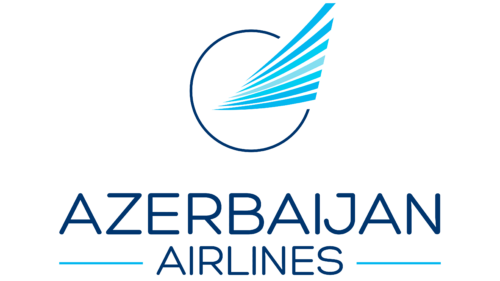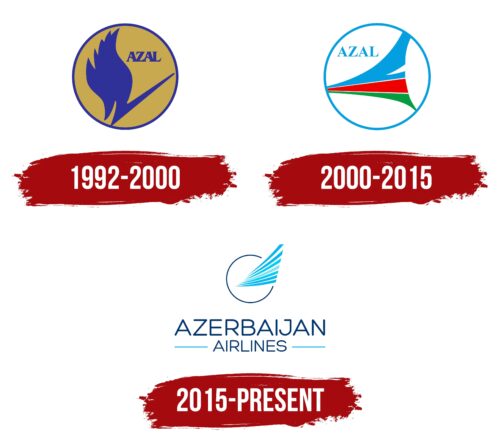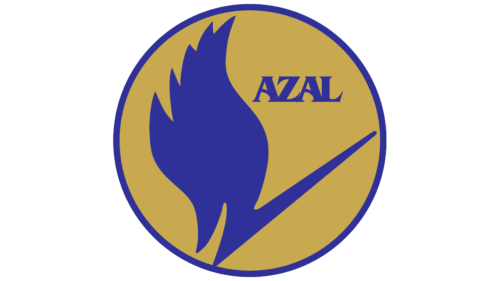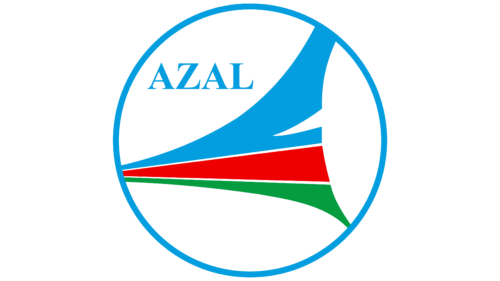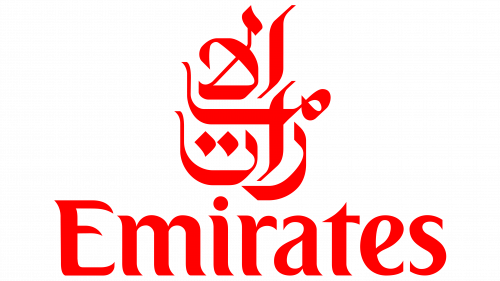The Azerbaijan Airlines logo, like a gentle wingbeat, draws you in. The emblem promises smooth flights at affordable prices. The company offers a wide range of services and aligns perfectly with passengers’ needs. Traveling with Azerbaijan Airlines means freedom and making dreams come true.
Azerbaijan Airlines: Brand overview
After the Soviet Union broke up and Azerbaijan declared independence on April 7, 1992, the country’s flag carrier, Azerbaijan Airlines (AZAL), was founded. This marked a pivotal moment in the growth of the nation’s autonomous aviation sector. The Azerbaijan Civil Aviation Administration, a part of Aeroflot, served as the foundation for the new company. Most of the aircraft in the fleet at its founding were Soviet models, such as the Tu-154, Il-76, An-24, and Yak-40.
The company started aggressively pursuing foreign routes in 1993. The airline’s first move in growing its global network and fortifying relationships with surrounding nations was the regular inauguration of flights to Istanbul, Turkey. The airline began updating its fleet in the same year by purchasing the Boeing 727-200, its first aircraft from the West.
In 1994, the airline launched daily flights to Dubai (UAE), Tehran (Iran), and Tel Aviv (Israel) as part of its ongoing international route expansion. These locations proved crucial to the growth of Azerbaijan’s travel and business industries. Along with modernizing its fleet, the airline started to phase out its antiquated Soviet aircraft.
Acquiring its first Airbus A320 in 1996, the company took a big step toward modernizing its fleet. With this acquisition, the airline entered a new phase of its existence and gained the ability to compete globally regarding comfort and operational effectiveness. A step toward increasing its market share in Europe was taken when it began operating flights to London that same year.
The airline added the Boeing 757-200 fleet in 1998 as part of its ongoing modernization efforts. Because of this aircraft, the company could run longer routes more effectively. The airline launched new routes to CIS nations in the same year to improve its standing in the post-Soviet region.
The company initiated a comprehensive infrastructure enhancement initiative in 2000, commencing with rebuilding Baku’s Heydar Aliyev International Airport, which functions as the airline’s primary hub. The objectives of this project were to raise airport capacity and enhance passenger service quality.
The airline commemorated its tenth anniversary in 2002. The company broadened its route network to encompass important European and Asian cities. The airline hosted several events to mark the anniversary and raise passenger service caliber.
2004, the company added more Airbus A319s to its fleet for renewal efforts. Thanks to these aircraft, the airline was able to boost efficiency on short and medium trips. That same year, the airline added new destinations in Central Asia to increase its regional footprint.
Baku’s Heydar Aliyev International Airport underwent a significant refurbishment in 2006, which the airline finished. The new terminal greatly expanded the airport’s capacity and raised the standard of passenger service. As a result, the airline increased the number of transit customers and strengthened Baku’s standing as a regional aviation hub.
The airline joined the International Aviation Organization (IATA) in 2008. By joining this association, the company demonstrated that it complies with global safety and service quality requirements. That year, the airline entered the cargo transportation business by operating Boeing 747-400F freight planes.
The company unveiled a comprehensive fleet replacement strategy in 2010. The airline considerably increased its capacity on long-haul routes by placing orders for brand-new Airbus A340s and Boeing 787 Dreamliners, increasing its competitiveness in the global market.
After receiving its first Airbus A340-500 in 2013, the airline was able to start operating direct flights to New York. With this significant achievement, the company entered the transatlantic market. The airline kept growing its network of routes throughout Europe and the Middle East that same year.
The company took delivery of its first Boeing 787-8 Dreamliner in 2014. Thanks to this sleek and efficient aircraft, the airline expanded its network of destinations and improved the quality of service on long-haul routes. The same year, the company introduced AZAL Miles, a frequent flyer program.
2016, the airline procured new Boeing 737-800s and Embraer E-190s as part of its ongoing fleet renewal program. With these aircraft, the airline could improve efficiency on medium—and regional-haul trips and optimize its route network. The same year, the company added new services to Kazakhstan and Uzbekistan, thus extending its reach throughout Central Asia.
The airline commemorated its 25th anniversary in 2018. At this point, the company was known for its dependability, large route network, and modern fleet. The airline declared intentions for future development and launched many unique incentives for passengers to commemorate the occasion.
The company acquired two new Embraer E190 aircraft in 2019 as part of its ongoing fleet modernization efforts. With the use of these contemporary regional planes, the airline was able to enhance its route network and boost productivity on less traveled routes. Passengers were given more itinerary options and improved network connectivity when the airline signed new partnerships with many international airlines to enhance its codeshare program that same year. Furthermore, the company intended to launch a new route to Delhi, India, fortifying its standing in the Asian market.
At the beginning of 2020, the airline announced ambitions to increase its footprint in Europe and launch new routes to several European cities. As part of its ongoing investment to enhance the quality of passenger service, a new in-flight entertainment system was recently introduced on select long-haul flights. In addition, the airline improved its web offerings and established new passenger communication channels on social media.
In 2021, the company concentrated on the most sought-after destinations and optimized its route network as part of its ongoing efforts to improve operational efficiency. Additionally, the airline improved its cooperation with other regional carriers, increasing the chances for travelers to transit through Baku. This year, the company celebrated its 30th anniversary of formation with exclusive offers for both staff and customers, marking a significant milestone.
The airline implemented new technologies in 2022 to streamline the check-in and boarding process as part of its ongoing effort to improve services. Additionally, the company revealed plans for additional fleet modernization, including the possible purchase of new narrow-body planes for medium—and long-haul flights. The airline improved worker training programs this year, emphasizing raising the caliber of passenger service.
In 2023, the company expanded its route network by adding multiple new destinations and fortifying its position in domestic and foreign markets—additionally, the airline invested in modernizing Baku Airport’s infrastructure and enhancing traveler circumstances. With the release of an enhanced mobile app, the airline gives customers easier access to services and flight information.
Meaning and History
What is Azerbaijan Airlines?
It is Baku’s national flagship carrier. It operates international and domestic flights, connecting Azerbaijan to numerous destinations in Europe, Asia, and the Middle East. Known for its service and modern fleet, the airline offers various classes of service, including economy, business, and first class. The airline plays a vital role in developing Azerbaijan’s travel and tourism industry by providing passengers with reliable and comfortable air transportation options.
1992 – 2000
The logo of Azerbaijan Airlines, used from 1992 to 2000, embodies dynamics and the airline’s aspiration to reach new heights. A central element of the logo is the golden circle, representing the sun, a source of light and warmth. This element is deeply symbolic, reflecting the wealth and prosperity of Azerbaijan and highlighting the country’s ambitions to make its mark on the global stage.
The blue border surrounding the golden circle represents the sky—a boundless space birds explore. This element emphasizes the airline’s primary activity—flight and serves as a reminder that Azerbaijan Airlines plays a vital role in connecting people and cultures across space and time, bridging vast distances.
At the logo’s center is a blue swan—a proud and graceful bird symbolizing majesty and beauty. The swan’s posture, with its neck extended and wings in motion, conveys dynamism and the aspiration to soar, metaphorically reflecting the airline’s drive to achieve new heights and goals.
The name “AZAL” on the right side of the emblem is an acronym derived from the first syllable of “Azerbaijan” and the initial letters of “Air” and “Lines.” This name facilitates memorability and recognition, strengthening brand identification as Azerbaijan’s national carrier and emphasizing its key role in the country’s aviation industry.
2000 – 2015
The new logo design for Azerbaijan Airlines features a white circle that symbolizes the earth, highlighting the company’s universality and global scale of operations. Within this circle, an airplane is depicted using three stripes—blue, red, and green—the colors of the Azerbaijan flag. These colors were chosen for the airplane to reflect deep cultural and historical contexts, representing national values and pride. Blue symbolizes freedom, red signifies courage and progress, and green represents the land and nature of Azerbaijan.
The airplane design in the logo represents dynamism, speed, and determination, which are key attributes of the airline. This image conveys the company’s drive for development, the pursuit of new directions, and the improvement of its services, highlighting its ability to quickly and efficiently achieve its goals.
The inscription “AZAL” in a light, airy blue style enhances the composition, adding a sense of lightness and spaciousness. This font decorates the logo and emphasizes the airline’s commitment to high standards of service and comfort. The font’s modern appearance helps maintain the company’s contemporary and relevant image in the eyes of customers and partners.
2015 – today
The Azerbaijan Airlines logo features the name divided into two lines, center-aligned at the bottom. The text is dark blue, written in a straight, sans-serif font with uppercase letters and rounded corners. Light blue horizontal lines flank the word “Airlines.” Above the text, seven smoothly curved lines in various shades of light blue symbolize flight. These lines form the image of a wing and the contrail left by an airplane, enclosed within an open circle.
The dark blue text represents trust and reliability. The light blue horizontal lines add calmness and serenity, qualities often associated with air travel. The shades of light blue in the curved lines above emphasize diversity and inclusivity, highlighting the airline’s extensive reach to various destinations. The open circle around these lines signifies completeness, potential expansion, and new opportunities.
The uppercase, rounded letters in dark blue convey strength and approachability. The light blue lines add balance and structure, reinforcing a sense of tranquility and stability.
The seven curved lines symbolize flight and reflect the dynamic nature of air travel. Their varying shades of light blue add depth and movement to the logo, suggesting the airline’s progressive and inclusive approach.
The open circle signifies wholeness and continuity, while its open nature hints at future growth and opportunities. This element underscores the airline’s commitment to expanding its horizons and embracing new possibilities.
FAQ
What is Azerbaijan Airlines’ airline code?
The national airline of Azerbaijan uses the IATA code “J2”. This code is required in the airline industry for ticketing, scheduling, and baggage management tasks. It simplifies and standardizes the operation of the company and airports worldwide. The “J2” code helps you manage your flights and ensure passengers’ luggage reaches the correct destination.
Who owns Azerbaijan Airlines?
The company, known as AZAL, is owned by the government of Azerbaijan and is the national air carrier connecting the capital, Baku, with major cities in the CIS, Europe, Asia, and the Middle East. AZAL offers both passenger and cargo services. Founded shortly after Azerbaijan gained independence in 1991, AZAL has played a key role in expanding the country’s aviation industry and global connections. Government-owned, the airline helps support national economic and tourism objectives, promoting growth and international cooperation.
